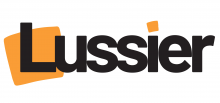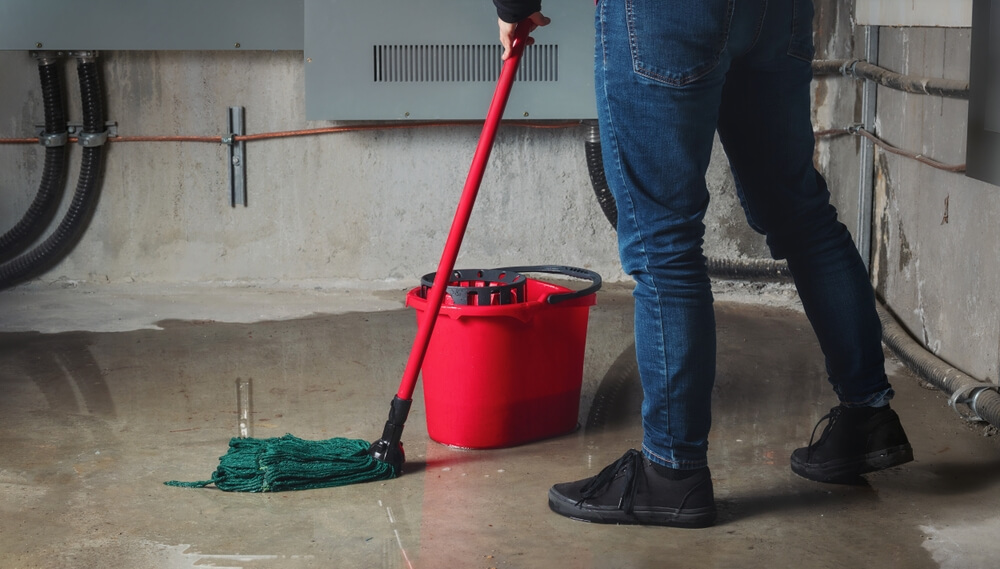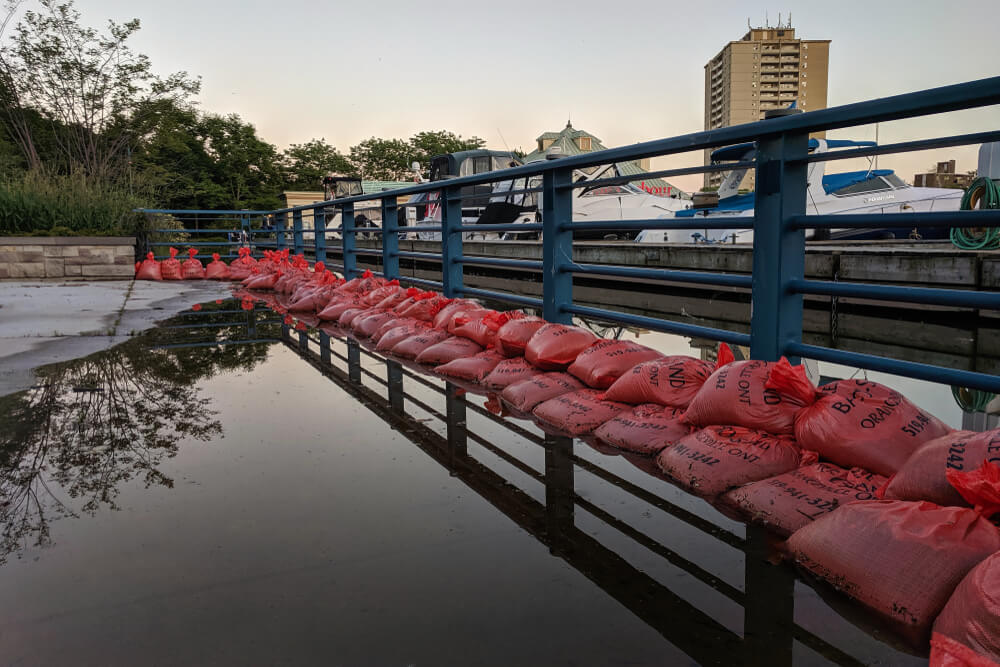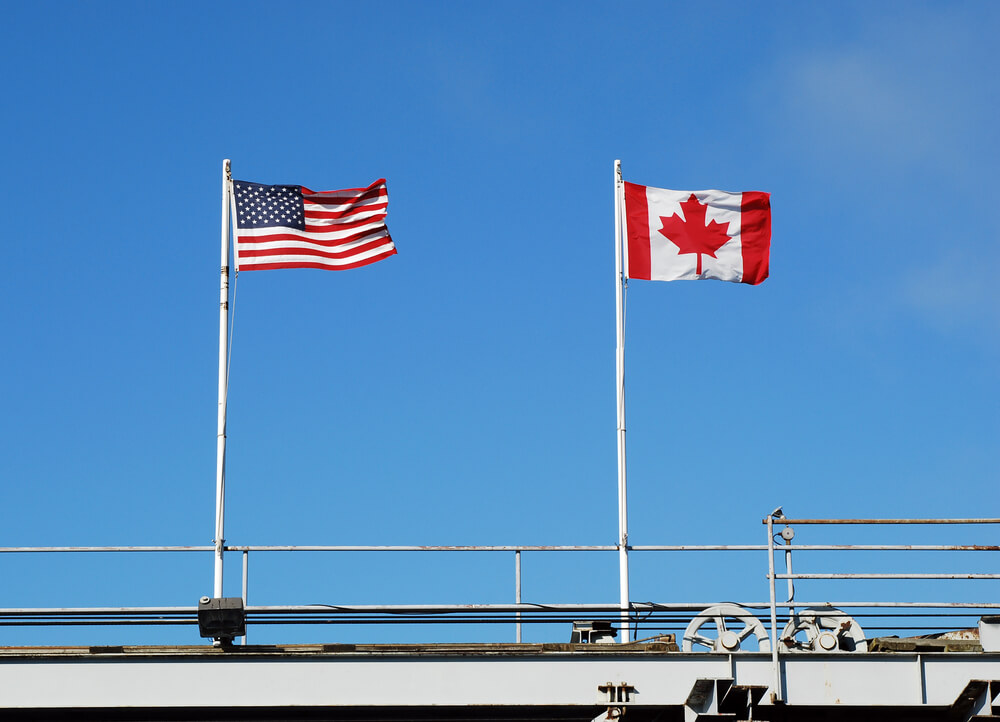Compare Canadian Home Insurance Quotes
Shop and save an average of $417 a year* on home insurance.
Compare home insurance quotes from providers you trust
Head straight to:
- What is a home insurance quote?
- Different types of home insurance quotes
- Home insurance 101
- The key elements of home insurance coverage
- Optional home insurance coverage & endorsements
- What is not included in a typical home insurance policy
- 7 ways to get cheap home insurance
- How to get your home insurance quotes on RATESDOTCA
- Factors that determine your home insurance premium
- Canada Personal Property Insurance Premium Rate Index (2021 – 2023)
- Personal property insurance statistics in Canada, 2012 – 2022
- What do these recent home insurance trends mean to Canadians?
- Frequently asked questions about home insurance in Canada
What is a home insurance quote?
A home insurance quote estimates the cost of protecting your home from a range of perils.
A house insurance quote is the same thing; the terms are used interchangeably.
When you request quotes using our online tool, you’ll see a breakdown of the cost or premium, annually and monthly.
The premium is determined by a range of factors, including the type of home insurance policy you select. Companies may describe different types or tiers of coverage differently. Don't worry about that. Instead, focus on which perils the policy you're considering protects against – or excludes.
You may come across references to ‘all perils’ and ‘named perils’ in the description of a policy. These are insurance industry terms that refer to different forms of damage.
In general, the greater the volume of perils a policy protects against, the more expensive your premium is likely to be.
Comparison shopping for the cheapest premium is the fastest and most efficient way to secure the best home insurance coverage for the lowest rate. Get started with our free online tool. After sharing details about your home and yourself, RATEDOTCA surveys available home insurance quotes from dozens of providers and reflects the cheapest home insurance quotes.
Different types of home insurance quotes
Insurance providers may use trademarked names to promote various home insurance packages, but, in general, there are three types or tiers of coverage from which to choose. Though they share much in common, they differ in the amount of coverage they provide.
- Basic home insurance: Also known as ‘named perils insurance,’ basic home insurance coverage is great for homeowners looking to save a little cash in exchange for risking a financial hit on excluded items (in the event of a claim). It provides the least amount of coverage for your house and contents; your home is only protected against perils explicitly named in your policy. For this reason, you’ll sometimes see this policy type referred to as a named perils policy. ‘Fire’ is an example of a named peril you might see in a basic package. If it isn’t stated in your policy, you don’t have insurance protection against it. You may also see some insurance providers describe this type of policy as ‘limited.’
- Broad home insurance: A broad home insurance policy gives more robust coverage – an upgrade to the basic package because it provides all perils coverage to your home and named perils coverage to your contents. Some insurance providers describe this type of policy as ‘standard’.
- Comprehensive home insurance: This is the most inclusive (and expensive) type of home insurance. A comprehensive policy applies all perils coverage (except for exclusions listed in the policy) to your home and your contents, as indicated in the policy. This type of coverage, which is considered the most amount of coverage you can purchase before endorsements are added, is sometimes referred to as an all perils policy.
Recent home insurance quotes

Recent home Insurance Quote from Caledon east, ON
Detached 2,176 sq ft
July 07, 2025
Cheapest Quote
$ 157 / month
$ 1,886 / yearAverage Quote
$ 219 / month
$ 2,629 / yearSavings
$ 62 / month
$ 744 / year
28 %
Recent home Insurance Quote from Wasaga beach, ON
Detached 1,855 sq ft
July 07, 2025
Cheapest Quote
$ 88 / month
$ 1,060 / yearAverage Quote
$ 122 / month
$ 1,465 / yearSavings
$ 34 / month
$ 408 / year
28 %
Recent home Insurance Quote from Ottawa, ON
Detached 1,669 sq ft
July 07, 2025
Cheapest Quote
$ 115 / month
$ 1,383 / yearAverage Quote
$ 323 / month
$ 3,877 / yearSavings
$ 208 / month
$ 2,496 / year
64 %
Home insurance quotes are compared from Apollo Insurance, CAA, Economical Insurance, Pembridge, Square One Insurance, and SGI
All about home insurance
In Canada, the law doesn’t require homeowners to have insurance, but many lenders do. So, if you need a mortgage, chances are you’re going to be getting home insurance. The questions then become: what type of coverage and how to get the best rate?
Comparison shopping is the single most effective way to reduce your insurance costs. Since most providers are offering a similar product, it’s worth figuring out which one is offering home insurance at the lowest rate. To save more money in the longer term, we recommend comparing rates every year when your policy is up for renewal. This approach guarantees that you’ll always have the best rate.
One of the reasons that home insurance rates tend to change more often than those for car insurance which are tightly regulated by the government. Insurance providers don’t have many options other than to change premiums because premiums are one of their two revenue streams. When low interest rates result in small returns on investments, their second revenue stream, premiums, goes up. Keep in mind, insurance providers are also paying out record claims – their volume and cost has been increasing year-over-year due to more and more incidents of severe weather worldwide.
The key elements of home insurance coverage
In addition to deciding on a policy type, you can pick and choose what coverage to include, selecting from the key elements described below. While all policy types include varying degrees of property and liability coverage, contents coverage and additional living expenses are negotiable.
- Property coverage: Protects the actual structure of the home from perils such as damage caused by fire and burglary. Coverage is based on the replacement value of your home, not the market value.
- Contents coverage: Getting contents insurance protects your personal property when it's at home and when you carry it with you, such as a laptop you bring to-and-from school, a bicycle you ride to work that’s stolen or the camera you bring on vacation, subject to limits.
- Additional living expenses: Additional living expenses coverage covers you in the event you are temporarily displaced from your home due to a claim.
Liability coverage
The umbrella term of personal liability coverage can protect you from lawsuits after damage or injury occurs on your property.
- Personal liability: If there is unintentional injury done to someone and/or if you accidentally damage someone else’s property (or if a child under the age of 12 in your care causes damage), you would be protected under your liability coverage.
- Voluntary medical payments: Voluntary medical payments will cover reasonable medical expenses for one year after an accident where you cause unintentional injury to someone, or they are injured on your property accidentally.
- Voluntary property damage: Voluntary property damage will cover if you or someone else in your home (or a child under the age of 12) causes damage to someone else's property by accident.
Optional home insurance coverage & endorsements
Regardless of what policy you get, it will not cover everything. In fact, it may explicitly exclude coverage against certain perils. These are referred to as 'exclusions'.
For wider protection, you must add additional coverage to your policy. These are called 'endorsements' or 'amendments'. They alter the provisions of the insurance contract.
Flood protection
The most important coverage to consider adding to any home insurance policy is flood protection. It’s a peril that affects more and more homeowners in Canada — and it’s rarely included as a peril.
Insurance providers distinguish between several types of flooding. This means that if you want maximum protection against flooding, you’ll need to add two endorsements to your policy. Some insurance providers combine flood-related endorsements into water protection packages.
- Overland water: Overland water coverage protects against damage when water enters the home through the foundation and basement floors or walls. It also covers damage caused by floods from rivers, lakes, or other bodies of water due to heavy rainfall, melting snow and rising rivers.
- Sewer back-up: Sewer back-up insurance covers you when a region's main sewer line backs up into your home, sometimes ruining entire basements and posing massive problems to your home and your health. Severe weather has increased the likelihood of this claim, which is why it is recommended more and more often.
Beyond flood protection
You can pick other endorsements to add to the policy. Every region has different risks, so depending on where you live you might consider adding one of these optional coverages:
- Credit and debit card forgery: This insurance helps to offset any financial loss or other losses due to credit or debit forgery.
- Cybercrime endorsements: This can protect you from so-called digital risks such as identity theft, data breaches, cyber extortion, home systems attack and computer attack. Find out if cybercrime insurance is right for you, and if interested, talk to your provider to see what is available to you.
- Earthquake coverage: This coverage is listed as an exclusion in many policies. By adding this type of coverage, you can protect your home from earthquakes, which have been known to take place in some parts of Ontario, British Columbia and Quebec. Earthquakes can cause considerable damage to homes and contents, so it's a worthwhile type of insurance to consider if you live in an at-risk area.
- Freezer food: Food in freezers on your premises is protected if a power outage occurs or your freezer breaks. This insurance would be good if you have multiple freezers with food.
- Identity theft and identity fraud: Identity theft occurs when someone steals your identity. Identity fraud occurs when someone uses your identity. Both can take place when your credit card, social insurance number or passport are stolen and thieves use these items to gain access to your bank account. While some banks may reimburse you for lost funds, other costs associated with reclaiming your identity can quickly add up.
- Lock replacement: If you’ve experienced a burglary, lock replacement or locksmith coverage will pay for repairing or replacing any damaged locks and/or stolen keys.
- Mass evacuation: If you live in an area that’s susceptible to weather emergencies, particularly wildfires, you should consider getting mass evacuation insurance. This type of insurance is used in the case of having to evacuate your home and community. It helps cover extra expenses, such as food and lodging.
- Rider: If you have expensive items such as jewelry and engagement/wedding rings, musical instruments and equipment or high-end art, you may want to insure them under a separate policy called a 'rider.’ There are limitations to how much these items are covered under a standard home insurance policy. Learn more about insurance rider policies.
- Home-based business. Many of us are working from home these days and need protection in case of equipment damage, business interruption and liability claims. Depending on the size of your business, different options may be available to you. Check out some of our tips on running a home-based business and learn how insurance can help you out. For more information, talk to your insurance provider.
What is not included in a typical home insurance policy?
Even if you have the most coverage money can buy, having opted for every available endorsement, there are some perils against which no policy will protect you. In the insurance world, these are referred to as 'exclusions'.
Common exclusions are:
- Absence from the home: If you leave your home for an extended period and damage occurs, you may not be covered – unless you purchase something called ‘vacant home insurance.’
- Damage from renters: Most insurance providers require specific coverage for landlords. A standard home insurance policy is unlikely to protect you if a renter damages the property.
- Earthquake: Most policies exclude protection against earthquakes, though you can add coverage in the form of an endorsement.
- Existing damage: You’re unlikely to be covered for damage that began before you held the policy.
- Flooding: Most policies exclude flood protection, though coverage can be purchased as an endorsement.
There are also some perils for which no coverage is available. They’re referred to as ‘uninsured perils.’ For example, if your home is built on a known flood plain, no insurance protection may be available.
7 ways to get cheap home insurance
Saving on the cost of home insurance is easier than it may seem, particularly when you apply any of the following tactics.
- Agree to a credit check: In some provinces, you can consent to allowing an insurance provider to check your credit score. If your score is good, you may be eligible for savings. If your score is less than good, don’t worry, providers are not allowed to increase your rates in response.
- Bundle your home and auto insurance policies: Make sure each is held by the same provider. When an insurance company holds more of your business, they’re more likely to offer a discount.
- Fine-tune your policy: Purchase the protection you need, nothing more. Start by gauging your own risk tolerance. Will you be content if, in the event of a claim, your damaged belongings are not fully covered? If the answer is yes, then basic homeowners coverage might be sufficient for you.
- Increase your deductible: When you increase the amount that you’ll pay out of pocket in the event of a claim, you can usually lower your monthly costs. However, we recommend that you closely consider whether you’ll have the cashflow available. Monthly savings are no good if you can’t afford a higher deductible.
- Install safety features: Any step you take to prevent damage or increase safety to your home could result in savings on your policy. For example, installing smoke, Carbon Monoxide and burglar alarms could earn you a discount.
- Keep your home in good repair: Home insurance policies will protect you against perils that are sudden or unexpected. However, they won’t cover damage resulting from neglect. For example, if your roof collapses because it hasn’t been properly maintained, your policy won’t cover the cost of damage.
- Pay up front: If you’re able to pay up front for the home insurance policy, you’re likely to save.
How to get your home insurance quotes on RATESDOTCA
Ready to compare quotes and save?
Tell us about your home
Answer a few basic questions about your home. It won't take long!
Compare your quotes
See quotes from top insurance companies side by side.
Choose the right coverage
Find the right protection for your home and everything in it.
Secure your rate
Connect with the provider and secure your rate.
What people say about our quotes

Based on 6,447 reviews

Amazing
Very helpful and easy to use
Safe travels

Easy quick selection of rates
Easy quick selection of rates
J K

Great help in finding the best rate!
Great help in finding the best rate! Thanks a lot!
Ruthielyn opina

I like how I can quickly I can select…
I like how I can quickly I can select travel insurance. The web site had an issue earlier but seemed to correct itself.
Dennis

prompt service
Respnded quickly, recommended company was excellent
Michael W.

Save time and money with rates.ca
I always use rates.ca for my travel insurance. They compare rates from several insurance companies and I can choose the package that suits my needs. I save time, frustration, and best of all, money. Thank you rates.ca, I will definitely be using your service again in the future.
customer
Factors that determine your home insurance premium
To gauge risk, home insurance providers examine several factors about your home and you.
Address
The location of the home you’re insuring has a significant impact on how much you’ll pay for coverage. For example, if you live in a neighbourhood with a history of break-ins, insurers will charge more to account for the increased likelihood of theft or criminal damage. On the other hand, if you live in a neighbourhood with low crime rates, your premium will probably be cheaper. Find the estimated home insurance premium for your area.
Airbnb or Vrbo host
If you rent your home out on short-term platforms such as Airbnb or Vrbo, you may be inviting more risk to your property. Increased usage could add property damage, theft, injury, the potential for squatters, and personal safety. More risk equals more cost from your provider.
Electrical supply
Insurance providers consider homes with aluminum wiring, knob-and-tube or any low-amp service to be at greater risk of fire. While some of these circuits are perfectly safe, many have deteriorated over time. They may be willing to provide coverage if your old circuit passes an inspection from a licensed electrical contractor. However, expect the premium to be higher. To mitigate risk, most insurance providers will give you a few months to upgrade your electrical supply. If you don’t oblige, they’re likely to deny coverage.
Heating system
A heating source such as a wood-burning stove is considered high risk and can result in a higher home insurance premium. If instead, your home is heated by hot-water radiators or forced air heating, which insurance providers consider lower risk, you’re likely to pay less.
Pets
Don't be surprised to see questions on a home insurance application about whether you have a pet, including kind, age, size and breed. This is because insurance providers factor in the risk of injury in your home, including those that could result from an animal bite. Some breeds are considered especially problematic and can result in higher premiums or coverage being denied. While every home insurance provider is different, the most common breeds likely to cause issues are the following dogs:
- Dobermans
- German Shepherds
- Great Danes
- Pit Bulls – which are currently banned in Ontario
- Rottweilers
- Siberian Huskies
- Staffordshire Terriers
Most exotic and wild animals are unlikely to be insured. For example, wolves, exotic cats and alligators. Learn how different pets affect your home insurance premium.
Plumbing
Insurance providers aim to avoid risk, and flood risk especially. If your home has been upgraded with plastic or copper pipes, you may receive a lower premium. On the other hand, if your plumbing is susceptible to cracks and leaks, your premium could be more expensive. The latter is more often an issue in older homes. Learn more about plumbing water damage.
Proximity to help
The closer your home is to a fire hydrant and emergency services such as a hospital, the lower your home insurance premium may be.
Homes in rural areas tend to have higher premiums, in part because of their distance from emergency services. In the event of damage to the home due to a covered peril such as a fire, or someone being injured on your property, help is harder to access. Find out how your location can impact your insurance premiums.
Renovations and betterment
When you renovate your home to improve its overall value, your home insurance premium is likely to increase. This is because the policy is designed to cover the cost of damage in the event of an accident.
For example, if you add a swimming pool, along with the added fun of a pool, any insurance provider may consider there to be additional potential safety risks. This, in turn, can lead to an increase in your home insurance premium.
On the other hand, if renovations increase the safety of your home such as replacing the pipes or upgrading the wiring, your premium could go down.
Replacement cost
Replacement cost refers to the cost of rebuilding your home completely following damage from a covered peril such as a tornado or a devastating house fire. If you opt for a lower replacement cost, you may be eligible for a lower premium.
Roof
Newer roofs are designed for proper ventilation, minimizing the chance of mold or dampness getting into your home. Modern tiles are made of lighter and more durable materials than the old slate ones, making them more resistant to storm damage and less likely to hurt someone if they come flying off. This increased protection, along with decreased liability, means homes with new roofs are more popular with insurers.
Security system
You can reduce your home insurance premium by installing a security system. Its presence will reassure your insurance provider that your home has adequate protection from intruders which, in turn, could persuade them to offer a lower rate.
Bundling your home and auto insurance
One of the easiest ways to reduce your insurance costs is to bundle your home and auto insurance policies so that each is held by a single provider.
For example, if you have an auto insurance policy and a home insurance policy, you can choose to have each held by the same company. This means you’re doing more business with them. In turn, they will often pass on considerable savings to you.
Bundling options are also available for consumers interested in multiple forms of coverage. For example, you can insure multiple residences with the same insurance company that provides coverage for your primary residence.
How your home is used – as a business or home office
If you’re operating a business from your home, you’re likely to pay more for home insurance coverage. The type of business it is will be important. For example, if your business relies on a laptop and nothing more, you won’t need a complex policy. On the other hand, if you’re running a daycare there’s more risk and your premiums will be higher.
If your business has to do with renting out a unit on a temporary basis, you should inform your insurance provider. A standard home insurance policy may not allow it. In many instances, a specific sort of coverage is needed for homes that are used as rental properties.
Your claims history
Insurance providers consider your claims history to be an indication of how likely you are to make a claim in the future. If you’ve never made a claim before, you may be rewarded with a lower home insurance premium. On the other hand, if you’ve made claims in the past, your rate may be higher.
Your credit score
In some provinces, insurance providers are allowed to use your credit score when offering you a quote. Your consent is required, and, by law, the insurer is only allowed to use the information to offer a lower premium. In other words, if you have a poor credit score, they’re not allowed to punish you with a higher premium.
Your lifestyle
Your age, occupation and whether you smoke are personal details that insurance providers use to gauge what sort of risk you are. They’ll also want to know if you rent out a portion of your home. We encourage you to be honest when answering these questions because any false information can be used to deny a payout in the event of a claim.
| Quarter | Alberta | Atlantic Provinces | Ontario | Quebec | BC | Sask. & Man |
|---|---|---|---|---|---|---|
| Q1 2021 | 1.6% | 4.9% | 0.3% | 8.6% | 3.9% | 4.2% |
| Q2 2021 | 6.5% | 6.4% | 2.5% | 1.5% | 6.1% | 7.2% |
| Q3 2021 | 10.3% | 5.2% | 3.7% | -0.9% | 7.8% | 7.0% |
| Q4 2021 | 10.1% | 7.9% | 2.3% | -0.2% | 8.1% | 6.6% |
| Q1 2022 | 10.0% | 5.7% | 4.9% | 0.8% | 10.0% | 7.5% |
| Q2 2022 | 8.1% | 5.5% | 5.3% | 5.7% | 8.7% | 6.6% |
| Q3 2022 | 11.6% | 7.4% | 4.6% | -5.1% | 7.0% | 6.9% |
| Q4 2022 | 10.0% | 7.3% | 5.4% | 2.0% | 6.3% | 6.7% |
| Q1 2023 | 5.1% | 8.2% | 5.1% | -0.5% | 6.9% | 5.2% |
| Q2 2023 | 7.1% | 8.6% | 6.4% | -0.4% | 9.0% | 6.2% |
| Q3 2023 | 1.0% | 10.2% | 7.5% | 11.1% | 10.1% | 7.5% |
| Q4 2023 | 0.7% | 9.1% | 8.0% | 2.5% | 11.1% | 6.4% |
Source: The Applied Rate Index (Q4 2023)
Personal property insurance statistics in Canada, 2012 – 2022
As seen in this table (data taken from the annual factbook created by Insurance Bureau of Canada, or IBC), Canadian property insurance claims have risen steadily over the last 10 years. Unsurprisingly, net written premiums have also increased:
| Year | Personal Property (Net Written Premiums in $000,000) | Personal Property (Net Claims in $000,000) |
|---|---|---|
| 2022 | 14,836 | 8,479 |
| 2021 | 14,385 | 7,047 |
| 2020 | 13,712 | 7,012 |
| 2019 | 12,419 | 7,180 |
| 2018 | 11,976 | 7,228 |
| 2017 | 11,226 | 6,533 |
| 2016 | 10,663 | 6,253 |
| 2015 | 10,187 | 5,489 |
| 2014 | 9,791 | 6,045 |
| 2013 | 9,024 | 6,161 |
| 2012 | 8,565 | 5,013 |
Personal property damage claims growth rate is based on IBC data from 2012 through 2022, the most recent ten-year period available.
What do these recent home insurance trends mean to Canadians?
Personal property premium rates have increased for Canadians across the board.
From Q4 2021 to Q4 2022 rates rose an average of 6.1%. Much of that increase can be attributed to the financial costs associated with severe weather damage, which reached a peak of $3.4 billion in 2022, according to the Insurance Bureau of Canada.
That severe weather damage continued into 2023, as flooding and a difficult fire season last year added to the list of catastrophic events. This has forced home insurance providers to reconsider their premiums and risks, to recapture costs. 2023 ranks as the fourth worst year for insured losses in Canadian history. As a result, we find that Q4 2023 personal property premium rate increased 6.6% versus the same quarter in 2022 and a 2.4% increase versus Q3 2023.
Now, more than ever, it’s important to consider the benefits of a home insurance policy that can accommodate severe weather events and climate change.
To avoid high premiums, we recommend that Canadians take the important step of comparison shopping for the best home insurance rate. Though there are several other ways to reduce a home insurance rate, comparison shopping is the single most effective tactic.
Frequently asked questions about home insurance
Here are some of the most frequently asked questions about home insurance in Canada:
How much is home insurance?
The cost of home insurance in Canada depends on factors unique to you as a homeowner and your home. The newness of your home and its internal systems, the neighbourhood, your past insurance history, the region of the country you live and similar factors can all increase or decrease your policy premiums.
Prices may also vary depending on the steps you take to reduce risks within your home, like updating your security system and renovating your roof, for instance, or if you receive discounts for being a senior or a member of an alumni group.
Having said that, according to RATESDOTCA’s Home Insuramap data, the average price for home insurance in Ontario is $1,487 per year, while in Alberta the rate stands at $2,339 per year.
Is it safe to buy home insurance online?
Yes. It’s safe and also convenient. The home insurance calculator on RATESDOTCA will quickly reveal the lowest home insurance rates from the best providers in Canada. Only a few details about your home and you, the policyholder, are required. Once you secure a quote, you’ll be contacted by a broker who will answer any questions you have about what coverage is right for you.
Who offers the cheapest home insurance in Canada?
Insurance quotes are based on risk assessment, and everyone gets a premium tailored to their specific circumstances. For this reason, no company can claim to be the cheapest. Find the cheapest home insurance for you and your family by comparing quotes on RATESDOTCA.
What is my home rebuilding cost?
It should come as no surprise that the answer to this depends on your home. How much would it cost to rebuild your home with similar materials if it was destroyed? A rough estimate for the average home in Canada is $200 per square foot. But, rebuilding cost very much depends on where you live. Each insurance company will appraise the rebuild cost differently. These assessments are rarely negotiable, but if the rebuild ends up costing more than the appraisal predicted, your insurance company should cover the difference if you have replacement cost coverage on your policy.
What is replacement value of possessions?
When insuring your possessions, you may have the choice of replacement cost or actual cash value.
With replacement cost insurance, you receive the value of any lost items without a deduction for depreciation. For example, if your five-year-old laptop is stolen, you are covered for the cost of a new laptop, the same model (or as close as possible) to the one that you had before. This is a good thing, because it will allow you to adequately replace any lost items, but you may have to pay a higher premium for the privilege.
If you opt for actual cash value insurance, the insurance provider will only pay out the value of your five-year-old laptop in current, used condition. This is unlikely to cover the cost of replacing your lost item with a brand-new model, but you will have benefited from lower premiums prior to the claim. Learn more about protecting your possessions with home insurance.
What is home inventory and why do I need to update it regularly?
A home inventory of your belongings is a simple list of your insurable possessions. In the event of a claim, the insurance company will want proof that the lost possessions are as valuable as you say they are. Keep receipts for your most expensive purchases, and once per year, take a walk through your home and film everything in it. If something gets stolen, you can use the receipt and video evidence as proof. The more you own, the more contents coverage you need, so if you have made many expensive purchases, review your home insurance policy to ensure it is still adequate.
It is worth remembering that there are limitations to contents coverage in a standard home insurance policy. If you have expensive items such as jewelry, musical instruments or a unique piece of art, you may want to insure them with additional coverage called a rider.
What is the difference between overland water and flood insurance?
Until recently, flood insurance was not available in Canada, but overland water coverage provided protection against freshwater entering your home. This could be water from excessive rainfall and a leaky roof, or a nearby river bursting its banks.
Overland water is still a very popular endorsement, but a wider range of flood insurance is now available. See our guide on flood insurance in Canada for more information.
What is sewer back-up insurance?
If the sewage line from your home is blocked, the wastewater could back up and overflow out of a toilet. Basements and ground floors are particularly susceptible to this. Sewer back-up insurance covers decontamination costs and replacements for your ruined fixtures and possessions.
What is the difference between mortgage insurance and home insurance?
Mortgage insurance is a specialist policy, used by banks and other mortgage lenders. It covers losses if a homeowner defaults on mortgage payments. It has nothing to do with home insurance.
Is property insurance the same as homeowners insurance?
The terms, property insurance, home insurance, house insurance and homeowners insurance are often used interchangeably. However, there’s a slight difference when it comes to property insurance which is a wide-ranging term for any policy that protects a building and its contents – whether it is an office, school, hospital or any other insurable structure. Home, house or homeowners insurance, on the other hand, are synonyms. These policies are a type of property insurance, specifically designed to protect your home.
*Shoppers who obtained a home insurance quote on RATESDOTCA from January to December 2023 saved an average amount of $417. The average savings amount represents the difference between the shoppers’ average lowest quoted premium and the average of the second and third lowest quoted premiums generated by RATESDOTCA. Excludes tenant and condo insurance.
Latest home insurance articles:
Find more great home insurance rates
Get money-saving tips in your inbox.
Stay on top of personal finance tips from our money experts!











